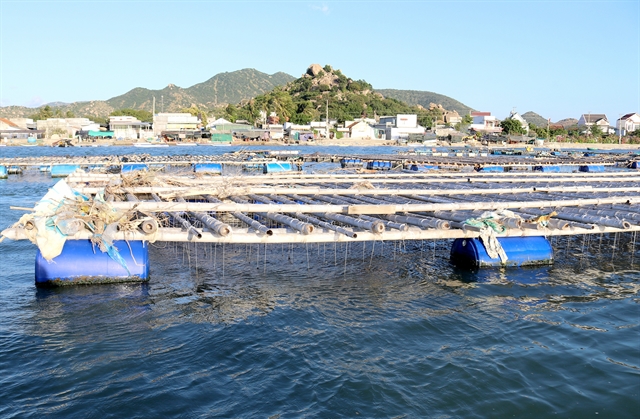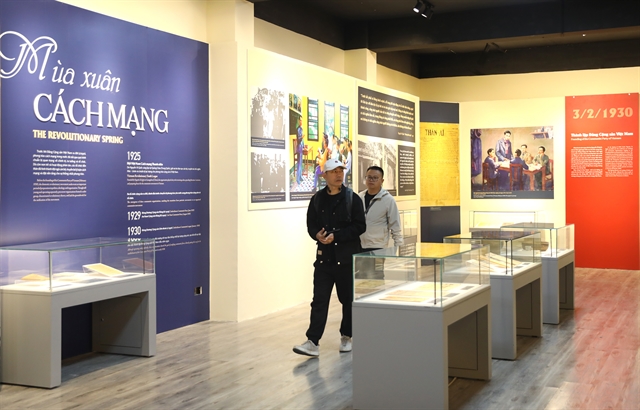 Society
Society

 |
| Pacific oyster floating cages in Nại Lagoon in Ninh Thuận Province’s Ninh Hải District. — VNA/VNS Photo Nguyễn Thành |
NINH THUẬN — Farmers in Ninh Thuận Province have expanded the breeding of marine aquatic species, such as Pacific oysters in floating cages in Nại Lagoon in Ninh Hải District.
With a long coastline and many lagoons, the south-central province has favourable conditions for developing marine aquaculture. Nại Lagoon covers 1,200ha and is one of the country’s 12 largest lagoons.
Hà Thị Ngọc in the district’s Tri Hải Commune is breeding six Pacific oyster floating cages and has recently harvested two cages with an output of more than eight tonnes.
She earned more than VNĐ90 million (US$3,600) from selling the oysters to traders, she said.
“The investment cost for breeding Pacific oysters is low, and the natural conditions and water levels of Nại Lagoon are suitable for oyster growth,” she said.
Pacific oysters are easy to breed, do not require much tending and eat natural food so farmers do not need to buy food for them.
Each crop of the oysters takes four to five months.
Up to 145 households are breeding more than 550 Pacific oyster floating cages in Nại Lagoon.
Besides Pacific oysters, Ninh Hải District authorities have encouraged farmers to diversify breeding into other marine aquatic species.
Ninh Hải and Thuận Nam districts and Phan Rang-Tháp Chàm City are developing the cultivation of lobsters and marine fish.
The province has 2,642 lobster floating cages.
Farmers have harvested more than 54 tonnes of lobsters in the first ten months of the year.
Of the 2,642 lobster floating cages, 800 breed lobsters, pomfret and cobia in the same cage.
Đặng Văn Tín, head of the province’s Fisheries Sub-department, said the province has more than 105km of coastline and a diversified system of lagoons, bays and ponds which are favourable conditions to develop marine aquaculture, and this helps create jobs and improve incomes for farmers.
The province is implementing measures to develop marine aquaculture, including the zoning of aquaculture areas, using advanced farming techniques to adapt to natural conditions and climate change, and developing the breeding of high value aquatic species.
The province plans to reach an aquaculture output of 9,500 tonnes and produce 41.35 billion seeds of aquatic species this year, according to the sub-department.
It will expand effective breeding models in the remaining months of the year.
The province’s seed producing centres and companies have boosted the research and production of seeds of shrimp, bivalve molluscs, cobia, pomfret and other high value aquatic species to meet the demand of breeders.
The province’s Department of Agriculture and Rural Development has provided farmers breeding techniques and measures to prevent and control diseases.
The province has encouraged companies to invest in marine aquaculture and transfer breeding techniques to farmers.
It has encouraged the use of advanced breeding techniques such as high-density polyethylene floating cages with Norwegian techniques that can withstand winds and waves better than traditional floating cages. VNS




